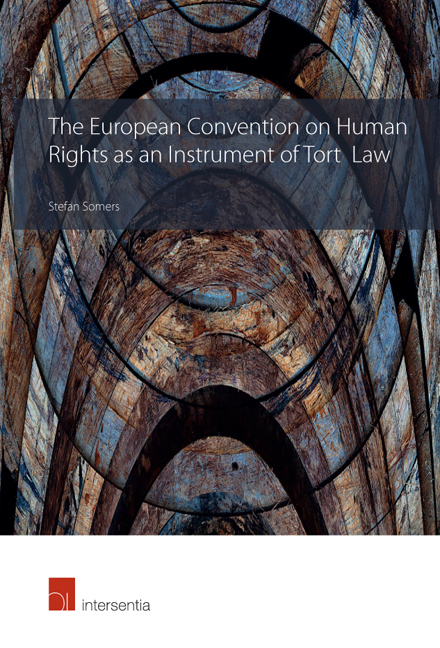Book contents
- Frontmatter
- Dedication
- Contents
- List of Cases
- Introduction
- Chapter 1 Human Rights in Horizontal Relations
- Chapter 2 Articles 13 and 41 ECHR and State Liability
- Chapter 3 The Interaction between Articles 13 and 41 ECHR and Liability in Horizontal Relations
- Chapter 4 Tort Liability as a Violation of Human Rights
- Chapter 5 Article 41 as an Alternative Tort Law System
- Chapter 6 General Outline of Article 41 of the Convention
- Chapter 7 Damages
- Chapter 8 Fault and Blameworthiness
- Chapter 9 Causality
- Chapter 10 Restitution
- Conclusion
- Bibliography
- About the Author
Chapter 3 - The Interaction between Articles 13 and 41 ECHR and Liability in Horizontal Relations
Published online by Cambridge University Press: 31 January 2019
- Frontmatter
- Dedication
- Contents
- List of Cases
- Introduction
- Chapter 1 Human Rights in Horizontal Relations
- Chapter 2 Articles 13 and 41 ECHR and State Liability
- Chapter 3 The Interaction between Articles 13 and 41 ECHR and Liability in Horizontal Relations
- Chapter 4 Tort Liability as a Violation of Human Rights
- Chapter 5 Article 41 as an Alternative Tort Law System
- Chapter 6 General Outline of Article 41 of the Convention
- Chapter 7 Damages
- Chapter 8 Fault and Blameworthiness
- Chapter 9 Causality
- Chapter 10 Restitution
- Conclusion
- Bibliography
- About the Author
Summary
TORT LAW AS AN EFFECTIVE REMEDYFOR UNINTENTIONAL INFRINGEMENTS OF HUMAN RIGHTS BY PRIVATE PERSONS
The requirements that the ECtHR poses to governments under Art. 13 are also applicable to positive obligations. This includes the possible requirement to provide financial redress. This is interesting when looking at the positive obligations to protect human rights in horizontal relations. Since the ECtHR on the one hand requires states to provide a remedy and financial redress when the government violates the Convention, and on the other hand requires states to protect human rights in horizontal relations, a compensatory remedy must be provided in case human rights are violated in horizontal relations.
This poses the question of whether the state can fulfill this requirement by providing actions in tort law against private individuals. In 1979 Andrew Drzemczewski argued that an action in tort law against a private person would constitute an effective remedy in the meaning of Art. 13. This approach was followed for the first time by the Court in the case of X and Y v. the Netherlands. As was discussed before, the applicants in this case were a girl with mental disability and her father. The girl had been raped, but the Dutch police did not investigate the crime because rape could only be investigated after someone filed a complaint. The problem was that the victim was judicially unable to file such a complaint because she had a mental disability and yet her father could not do it in her place because she was already of age. Because of this, the Court found a violation of Arts 8 and 13. What is interesting about this case is that the government argued that it had a margin of appreciation and thus could decide on the appropriate remedies it had to take under Art. 13 and that it had chosen to provide an action in tort law. The claimants, on the other hand, objected that an action in civil law could not be qualified as effective in this case because it puts the burden of proof on the victims. Moreover, they argued that actions in tort law take a long time and are thus very demanding for the victims. In civil lawsuits, victims have to play a much more active role than in criminal lawsuits.
- Type
- Chapter
- Information
- Publisher: IntersentiaPrint publication year: 2018



